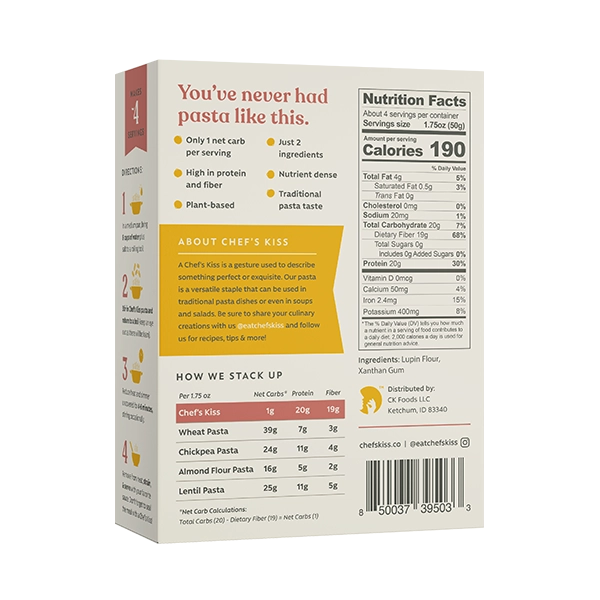
What are Net Carbs and How to Calculate them?
Net Carbs and How to Calculate Them: A Beginners Guide
You might be wondering what the net carbs are and how to calculate them! When you’re trying to manage your carbohydrate intake, it can be difficult knowing how much variety you should be eating. Carbs come in all different forms and there are a lot of little-known details about each one that can influence how well they work together. That’s why understanding how carbs work is so important. Whether you’re looking to lose weight or just want to keep your carbohydrate intake lower than usual, the right amount of carbs is key to achieving your goals. In this article we will explain what carb types are, their functions in the body, and help you calculate the correct amount of net carbs in the foods you eat.
What is a Net Carb?
Carbs are the main energy source of the body. They are digested via enzymes in the small intestine and absorbed into the bloodstream through the lymphatic system. When the body needs energy, it then uses these carbs to produce ATP (the chemical that powers all cells). In excess, carbohydrate intake can result in insulin resistance, fatty liver, and potentially type 2 diabetes. There are two main types of carb that you need to understand: Simple and complex. Our bodies digest simple carbs easily, and convert them quickly into glucose, which the body then uses for energy. They are commonly found in sweeteners such as honey, agave nectar and syrups. Complex carbs contain several nutrients, such as fibre and vitamins, and take longer for our bodies to digest. They are generally found in whole foods, and are therefore more healthy than simple carbs.
Good and Bad Carbs: What's the Difference?
How the body processes carbs is the main difference between good carbs and bad carbs.
1 - Bad Carbs: Fats, sugary foods, and highly processed foods like white bread are all examples of high-GI foods. Your body digest and absorb the bad carbs very quickly and will cause a spike in blood sugar levels.
2 - Good Carbs - Complex carbohydrates found in whole-wheat bread, vegetables, and legumes will take longer for the body to digest, resulting in a steady supply of energy over a longer period of time. Fruits are an important source of vitamins and minerals, but as they contain a lot of natural sugar, they are a low-GI food.
Understanding Your Net Carb Count
One aspect of carb counting that is particularly important to know is the net carb count. This is the amount of carbs you eat minus the amount that your body digest and absorb. The remaining amount is excreted via urine, sweat, and stool. There are a few reasons why you need to understand this. Firstly, it's not easy for your body to digest nutrients in vegetables and whole grains, whereas, it is much easier for the body to break down simple carbs such as sugar and honey. Secondly, the body store excess sugar can as fat, causing weight gain and metabolic issues. You’re better off having the carbs the body can easily break down and process, rather than storing them as fat.
How to Calculate Net Carb in Food
You can find Net carbs on nutrition labels, under ingredients, or on the back of the food packaging. It usually provides the total number of carbs, along with the percentage of fibre and sugar alcohols. There are several different ways to calculate net carbs, and the most common is using the “net carb count” method.
For example, let’s say you’re trying to count the carbs in a cup of cooked pasta. The nutrition facts on the back of the package show that there are 26g of carbs per serving, and 12g of fibre. You then divide the fibre by the serving size to get the net carb count, which comes out to 5g. That means the rest of the carbs in the serving are simple sugars. You can use this same method to find out the net carb count in other foods.
Tools You Can Use to Find & Calculate Net Carb
1 - Carb Counter - This is a free online tool that you can use to find the carb count in a wide variety of foods. Just enter the food, how much you’re eating, and how many carbs you’re trying to consume. The website will then tell you how much you need to eat to stay under your carb count goal.
2 - Glycemic Index - This measures the effect that a given food will have on your blood sugar level. Our bodies digest and break down foods with a high GI quickly, so they cause a significant spike in blood sugar levels, whereas the body digest low-GI foods more slowly which causes a more gradual rise.
3 - Glycemic Load - The glycemic index is a good way to find out if a certain food has a high or low carb count. But to get an accurate idea of how much net carb you’re consuming, you also have to take the load into account. This takes the amount of carbs in a food and compares it to how much a person eating the same amount of food would consume. It then assigns a number between 1 and 100, with 100 representing the highest amount of carbs in a food.
Fatty acids and Essential Fatty Acids (EFA)
There are two types of fat that are important to know about: Omega-3 and 6 fatty acids. Omega-3 fatty acids are mainly found in fish, nuts, and seeds, and are crucial for healthy brain function, heart health, and developmental development in babies. Omega-6 fatty acids are found in plant-based foods, and are a common source of metabolism-hampering inflammation in the body. Unfortunately, too many omega-6s can lead to an imbalance and too low of an intake is linked to metabolic issues like insulin resistance and type 2 diabetes.
Sugar Alcohols
Sugar alcohols are found in foods that have been hydrogenated to make them shelf stable and preserve freshness. Like carbs themselves, they are a type of sugar that is quickly digested and metabolized, causing a spike in blood sugar levels.
Fiber and Cellulose
Fruits, vegetables, and whole grain are crucial for gut health because of their fiber content. The body cannot digest fiber easily so it needs a long time to break it down. Therefore fiber can lower your net carb count. Cellulose (another type of fibre) comes from plants and you can get them from many supplements and probiotics. Like fibre, it does not get digested and is therefore responsible for lowering your net carb count.
SUMMING UP
Carbs are an important part of your diet. However knowing how to calculate net carbs is essential to staying within your daily carbohydrate intake goal. There are many types of carbs, and there's a lot of information you need to know about them to make sure you're getting the right amount.

















